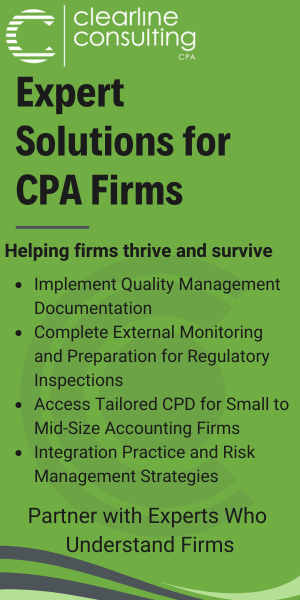How is the CPA CFE marked?

Part two of a five-part series on the Common Final Examination, from Andrew Knapman, CPA
VANCOUVER – Are you ready to become a chartered professional accountant? A Canadian CPA? In part one of this five-part series, we broke down the CPA Common Final Examination into its daily components, and I shared with you my insights as a newly minted CPA, who passed the CFE last year.
So, now that you know what the CFE entails, it’s really important to understand how the CFE is marked. This will help you understand just what you need to do to pass. It will also help you with your strategy for each day of the exam. Day 1 is marked separately from Day 2/3; you must pass both to pass the CFE, so let’s begin with Day 1.
Day 1
The CPA profession is discreet about how Day 1 is marked, merely saying it’s a holistic assessment of the candidate’s ability to follow the “CPA Way.” If you don’t know what the CPA Way is, just Google it—there are plenty of web pages and videos. You will be beaten over the head with this thing throughout the CPA professional education program (CPA PEP). It’s a solid strategy for approaching any CFE question and particularly Day 1.
On Day 1, candidates are not marked technically; instead they have to display enabling competencies such as broad thinking, decision making, integration, professional judgment and providing advice. Candidates must assess the situation, analyze the major issues faced, provide advice while integrating information based on the current situation and communicate professionally.
The good news is there is a very specific template you can follow on Day 1 that I will discuss in a future column. I actually found Day 1 the most arbitrary when it comes to marking, so it’s tricky to really give a lot of information on it.
Day 2/3
Unlike Day 1, the marking for Day 2 and Day 3 is very clear and has a four-level system for passing. You must pass all four levels to pass Day 2/3!
Before we dive in, it’s important to understand how a case is marked and the potential marks you can receive. A CPA case is made up of a variety of assessment opportunities (AOs). Each of these AOs is considered to be an AO of one of the six CPA competencies (financial reporting, management accounting, tax, finance, assurance and performance management).
Your response to each AO can be marked as either:
- Competent with Distinction (CD)
- Competent (C)
- Reaching Competent (RC)
- Nominal Competency (NC)
- Not Attempted (or Not Competent) (NA)
These letters will be etched in your brain for years after the program ends. Essentially, the more AOs you get into CD/C the better but even RC can be okay. NC/NA marks are worthless. You want as few of these as possible. Now, let’s see how each level of Day 2/3 is marked.
Level 1 – The overall competency demonstrated was sufficient.
Level 1 of the marking looks at your overall performance on Day 2/3 and essentially determines whether or not you reached CD, C and RC enough times across all competency areas based on the expectations of the board of evaluators (BOE).
Basically, the BOE might say a candidate needs to display CD, C and RC 15 times over all of the potential assessment opportunities in Day 2/3 to pass this stage of the marking. They don’t tell you how many times you have to display competency, so obviously aim for as often as possible!
Level 2 – The depth of knowledge in financial reporting OR management accounting was sufficient.
If you haven’t realized by now, financial reporting and management accounting are the main accounting topics you need to master, so this stage is all about whether or not you have mastered these enough.
This is similar to Level 1 marking, only now the topics concerned are restricted to FR or MA, and you now need C marks or above. RCs are not accepted here!
The BOE might say you must reach C/CD in the financial reporting or management accounting AOs four times. Again, you don’t know how many times, so you basically have to do well overall in MA or FR to stand any chance of passing the CFE.
The good news is, you will progress to the next stage if you show depth in either MA or FR. If you suck at one and ace the other, you can still pass the CFE. This was a relief to me as I’m pretty solid at MA; not so much at FR. In hindsight, I reached depth in both, so it didn’t matter.
Level 3 – The depth of knowledge in the elective competency was sufficient.
This is a really important one that I touched in part one of this series. On Day 2 you will play your elective role (tax, assurance, finance or performance management). This level of the marking says that you must display sufficient competency in that role in order to move onto Level 4.
Again, this means you must hit a certain number of C/CD grades in the assessment opportunities of your elective role. This puts a huge amount of pressure on your Day 2 performance as there is a possibility that Day 2 will be your only opportunity to display competency in your elective area.
For example, your Day 2 exam will definitely provide you with the opportunity to display competency in tax if you elected for tax, but you don’t know if the Day 3 exam will have any tax at all. If you fail on Day 2 to display this competency, you may have no chance to make up for it on Day 3. As such, this provides a huge strategic incentive for Day 2, which will be discussed in a future post about CFE strategy.
Level 4 – The breadth of knowledge in all competencies was sufficient.
If you make it to Level 4, the final hurdle is that you must display a breadth of knowledge across all competency areas. For example, you cannot ignore all assurance questions in the hope that you compensate for this by doing well in everything else. You must have a sufficient amount of knowledge in all competencies.
This means you have to reach RC or above enough times in each of the six competency areas to pass the final level. I actually found this the most daunting, as I was not confident in my tax knowledge and I worried I’d fall at the final hurdle.
Summary
Level 1 – You must hit CD, C or RC a sufficient number of times across all competency areas.
Level 2 – You must hit CD or C a sufficient number of times in financial reporting or management accounting.
Level 3 – You must hit CD or C a sufficient number of times in your elective competency.
Level 4 – You must hit CD, C or RC a sufficient number of times in each of the competencies. Don’t skip any competencies!
And that’s it! If you manage to do all four of these and also pass Day 1, you’ve passed the CFE. Now that you know how it’s marked, we can actually develop some strategies for approaching each day, which will be discussed in a future post!
Andrew Knapman, CPA, is Canadian Accountant's student blogger. He lives in Vancouver, B.C.and passed the Common Final Examination in 2018. Connect with Andrew through his LinkedIn profile. The views expressed in this guest blog are his own.










(0) Comments